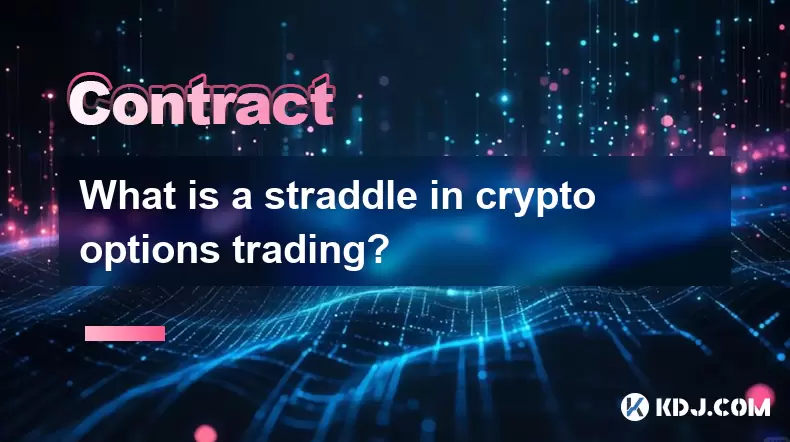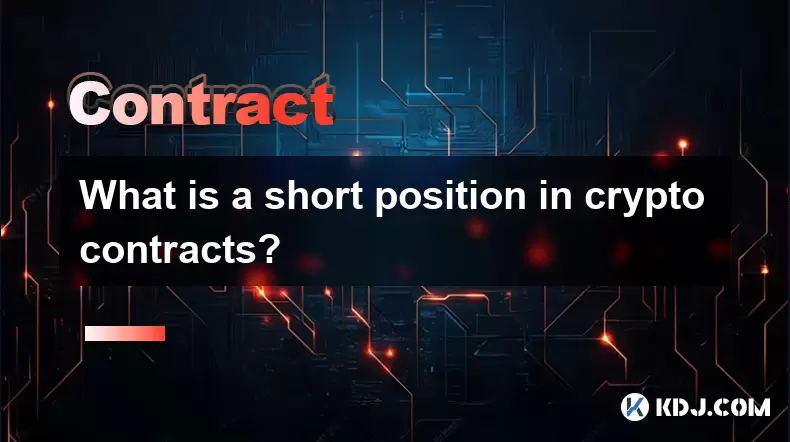-
 Bitcoin
Bitcoin $116400
0.87% -
 Ethereum
Ethereum $3819
3.86% -
 XRP
XRP $3.048
1.62% -
 Tether USDt
Tether USDt $1.000
0.03% -
 BNB
BNB $777.2
0.60% -
 Solana
Solana $169.3
0.46% -
 USDC
USDC $0.0000
0.02% -
 TRON
TRON $0.3414
2.06% -
 Dogecoin
Dogecoin $0.2126
3.33% -
 Cardano
Cardano $0.7527
1.21% -
 Hyperliquid
Hyperliquid $38.86
1.02% -
 Sui
Sui $3.683
5.27% -
 Stellar
Stellar $0.4048
1.45% -
 Chainlink
Chainlink $17.91
6.62% -
 Bitcoin Cash
Bitcoin Cash $576.9
1.29% -
 Hedera
Hedera $0.2487
1.03% -
 Ethena USDe
Ethena USDe $1.001
-0.01% -
 Avalanche
Avalanche $22.46
1.07% -
 Litecoin
Litecoin $120.8
1.69% -
 UNUS SED LEO
UNUS SED LEO $8.963
-0.30% -
 Toncoin
Toncoin $3.301
2.33% -
 Shiba Inu
Shiba Inu $0.00001250
1.13% -
 Uniswap
Uniswap $10.06
3.45% -
 Polkadot
Polkadot $3.731
1.56% -
 Dai
Dai $1.000
0.01% -
 Bitget Token
Bitget Token $4.416
1.58% -
 Cronos
Cronos $0.1482
3.73% -
 Monero
Monero $250.0
-12.34% -
 Pepe
Pepe $0.00001075
2.16% -
 Aave
Aave $274.6
4.17%
What is a straddle in crypto options trading?
A straddle lets crypto traders profit from high volatility by buying a call and put at the same strike and expiration, ideal before major events like halvings or regulatory news.
Aug 07, 2025 at 11:15 pm

Understanding the Basics of a Straddle in Crypto Options
A straddle is an options trading strategy used when a trader expects significant price movement in a cryptocurrency but is uncertain about the direction. This strategy involves simultaneously purchasing a call option and a put option on the same underlying asset—such as Bitcoin or Ethereum—at the same strike price and with the same expiration date. The dual-position setup allows the trader to profit whether the price of the cryptocurrency surges upward or plummets downward, as long as the move is substantial enough to offset the combined premium paid for both options.
The appeal of a straddle lies in its neutrality toward market direction. Unlike directional strategies that require accurate predictions of price increases or decreases, a straddle capitalizes on volatility. In the crypto market, where prices can swing dramatically due to news, regulatory changes, or macroeconomic factors, this strategy becomes particularly relevant. The key to profitability is not predicting the direction but forecasting the magnitude of the price change.
How a Long Straddle Works in Crypto Options
When implementing a long straddle, a trader buys both a call and a put. Suppose Bitcoin is trading at $30,000, and a trader believes a major event—such as a Federal Reserve announcement or a hard fork—is imminent. The trader could buy a call option and a put option, both with a **strike price of $30,000 and expiring in one week. If the call option costs $1,000 and the put option costs $900, the total cost (or premium outlay**) is $1,900.
For the trade to become profitable, Bitcoin’s price must move far enough in either direction to cover this cost. If Bitcoin rises to $33,000, the call option gains intrinsic value ($3,000), while the put expires worthless. After subtracting the $1,900 premium, the trader earns a net profit of $1,100. Conversely, if Bitcoin drops to $27,000, the put option becomes valuable, while the call expires. The process remains the same: intrinsic value minus total premium equals profit.
The break-even points are calculated as follows:
- Upper break-even: Strike price + total premium paid
- Lower break-even: Strike price - total premium paid
In this example, the break-evens are $31,900 and $28,100. Any move beyond these levels results in profit.
When to Use a Straddle in Cryptocurrency Markets
A straddle is most effective during periods of anticipated high volatility. Crypto traders often deploy this strategy ahead of scheduled events such as:
- Major exchange listings
- Regulatory announcements
- Protocol upgrades
- Halving events
- Earnings reports of major crypto-linked companies
Because cryptocurrencies lack centralized earnings calendars, volatility often stems from unpredictable macro-level triggers. For instance, if a country announces new crypto regulations, the market may react violently. A straddle allows traders to position themselves without taking a directional bet. The strategy thrives when implied volatility is relatively low before the event, making options cheaper to purchase. Once the event occurs and volatility spikes, the value of the in-the-money option increases rapidly.
It is essential to monitor implied volatility (IV) before entering a straddle. If IV is already high, the premiums for both call and put options will be inflated, increasing the cost of the strategy and raising the break-even thresholds. Traders should aim to establish straddles when IV is low and expected to rise.
Executing a Straddle: Step-by-Step Guide
To set up a straddle on a crypto options platform like Deribit, OKX, or Bybit, follow these steps: - Log in to your crypto derivatives exchange and navigate to the options trading section
- Select the underlying asset, such as BTC or ETH
- Choose the expiration date aligned with the expected event
- Set the strike price at or near the current market price (at-the-money)
- Buy a call option at that strike
- Buy a put option at the same strike and expiration
- Confirm both transactions and ensure the total premium is within your risk tolerance
After execution, monitor the position closely. Some platforms allow setting price alerts for the underlying asset to track when it approaches break-even levels. If the price moves significantly in one direction, consider closing the losing leg (e.g., sell the put if BTC is rising) to recover some premium and reduce risk. However, doing so converts the position into a directional trade and eliminates the original volatility-based advantage.
Risks and Considerations in Crypto Straddles
While straddles offer profit potential during high volatility, they come with notable risks. The maximum loss is limited to the total premium paid, but this loss occurs if the cryptocurrency price remains near the strike price at expiration. This scenario is known as theta decay, where options lose value as time passes, especially in low-volatility environments.Crypto markets can sometimes experience "volatility crush"—a sharp drop in volatility after an event, causing both options to lose value rapidly. For example, if a highly anticipated announcement results in a muted market reaction, the straddle could expire worthless. Additionally, liquidity can be a concern for less popular strike prices or expiration dates, leading to wider bid-ask spreads and higher transaction costs.
Traders must also account for funding costs if using leveraged accounts and be aware of settlement mechanisms—some platforms settle in cash, others in the underlying asset. Always verify the contract specifications before trading.
Alternative: The Short Straddle
While less common due to unlimited risk, a short straddle involves selling both a call and a put at the same strike and expiration. This strategy profits if the underlying asset remains stable. The seller collects the premiums from both options and hopes both expire worthless. However, if the crypto price moves sharply, losses can exceed the initial premium received. This approach is generally unsuitable for inexperienced traders and requires significant risk management, including stop-loss orders or hedging with other instruments.Frequently Asked Questions
Can a straddle be used on altcoins?
Yes, a straddle can be applied to altcoins such as Solana, Cardano, or Polkadot, provided that options contracts are available on a supported exchange. However, liquidity and open interest may be lower compared to Bitcoin or Ethereum, resulting in wider spreads and less predictable pricing.What happens if the crypto price hits the strike price exactly at expiration?
If the underlying asset closes exactly at the strike price, both the call and put options expire out of the money, and the trader loses the entire premium paid. This outcome is the maximum loss in a long straddle.Is it possible to adjust a straddle after entering the trade?
Yes, traders can adjust a straddle by rolling one or both legs to a different strike or expiration, or by closing one leg early. For example, if Bitcoin starts rising, a trader might sell the put option to recoup part of the premium and focus on the call.How does funding work in a crypto straddle on leveraged platforms?
Funding fees do not apply to options in the same way as perpetual futures. Options are paid for upfront with premiums. However, if the options are held in a margin account, the account must maintain sufficient balance to cover potential losses, especially in short straddle scenarios.
Disclaimer:info@kdj.com
The information provided is not trading advice. kdj.com does not assume any responsibility for any investments made based on the information provided in this article. Cryptocurrencies are highly volatile and it is highly recommended that you invest with caution after thorough research!
If you believe that the content used on this website infringes your copyright, please contact us immediately (info@kdj.com) and we will delete it promptly.
- Pi Coin's dApp and AI Potential: Building a Decentralized Future
- 2025-08-08 02:30:12
- Bitcoin, Greenidge, and Liquidity: Navigating the Crypto Currents in NYC
- 2025-08-08 02:30:12
- Crypto Phishing Alert: $3 Million USDT Loss Highlights DeFi Risks
- 2025-08-08 01:10:12
- Crypto Presale Mania: Is Punisher Coin the High ROI King?
- 2025-08-08 01:10:12
- Online Betting, Platforms & Crypto Access: What's Hot in 2025
- 2025-08-08 00:50:12
- Layer Brett: The Meme Coin Primed for 100x Gains?
- 2025-08-08 01:50:12
Related knowledge

What triggers a liquidation event on a Coinbase futures position?
Aug 08,2025 at 01:15am
Understanding Futures Contracts on CoinbaseFutures contracts on Coinbase allow traders to speculate on the future price of a cryptocurrency, such as B...

What is a straddle in crypto options trading?
Aug 07,2025 at 11:15pm
Understanding the Basics of a Straddle in Crypto OptionsA straddle is an options trading strategy used when a trader expects significant price movemen...

How is the funding rate calculated for perpetual futures?
Aug 07,2025 at 11:36pm
Understanding the Basics of Perpetual FuturesPerpetual futures are a type of derivative contract that does not have an expiration date, allowing trade...

What programming languages are used for smart contracts?
Aug 07,2025 at 06:07pm
Understanding Smart Contracts and Their Execution EnvironmentSmart contracts are self-executing programs deployed on blockchain networks that automati...

What is a short position in crypto contracts?
Aug 07,2025 at 11:42pm
Understanding the Concept of a Short Position in Crypto ContractsA short position in crypto contracts refers to a trading strategy where a trader prof...

What is a long position in crypto contracts?
Aug 07,2025 at 06:29pm
Understanding the Concept of a Long Position in Crypto ContractsA long position in crypto contracts refers to a trading strategy where a trader buys a...

What triggers a liquidation event on a Coinbase futures position?
Aug 08,2025 at 01:15am
Understanding Futures Contracts on CoinbaseFutures contracts on Coinbase allow traders to speculate on the future price of a cryptocurrency, such as B...

What is a straddle in crypto options trading?
Aug 07,2025 at 11:15pm
Understanding the Basics of a Straddle in Crypto OptionsA straddle is an options trading strategy used when a trader expects significant price movemen...

How is the funding rate calculated for perpetual futures?
Aug 07,2025 at 11:36pm
Understanding the Basics of Perpetual FuturesPerpetual futures are a type of derivative contract that does not have an expiration date, allowing trade...

What programming languages are used for smart contracts?
Aug 07,2025 at 06:07pm
Understanding Smart Contracts and Their Execution EnvironmentSmart contracts are self-executing programs deployed on blockchain networks that automati...

What is a short position in crypto contracts?
Aug 07,2025 at 11:42pm
Understanding the Concept of a Short Position in Crypto ContractsA short position in crypto contracts refers to a trading strategy where a trader prof...

What is a long position in crypto contracts?
Aug 07,2025 at 06:29pm
Understanding the Concept of a Long Position in Crypto ContractsA long position in crypto contracts refers to a trading strategy where a trader buys a...
See all articles

























































































